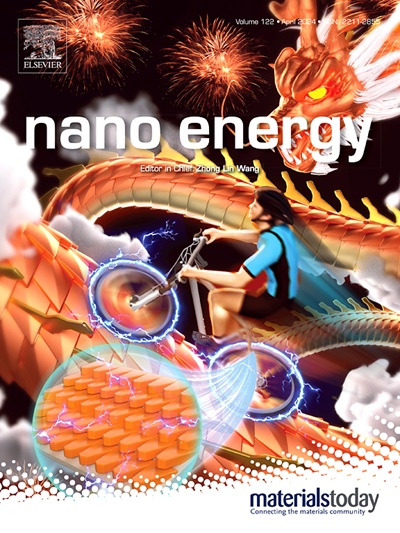Research progress in catalytic conversion of CO2 and epoxides based on ionic liquids to cyclic carbonates
IF 17.1
1区 材料科学
Q1 CHEMISTRY, PHYSICAL
引用次数: 0
Abstract
CO2 emissions have increasingly serious impacts on the environment. As CO2 itself is a good C1 resource, developing scientific and reasonable CO2 conversion and utilization routes become a common concern of the world. At present, the preparation of cyclic carbonate from CO2 and epoxide is one of the most ideal conversion routes. Cyclic carbonate is not only the raw material of lithium battery production, but also widely used in medicine, chemical industry and other industries. Because of the stability of CO2, the catalytic conversion of CO2 requires the participation of catalysts. Ionic liquids (ILs) as catalysts have the advantages of being designable and functional, and scientists have developed various types of ILs to catalyze the synthesis of cyclic carbonates from CO2 to epoxides with very satisfactory results. This article provides a comprehensive review of the latest research developments in the field of ILs catalyzed conversion of CO2 and epoxides to cyclic carbonates. It meticulously interprets the structure and chemical properties of CO2 and ILs, thoroughly analyzes the reaction mechanisms, and offers profound insights into the challenges encountered in the current reaction processes. Additionally, the article systematically summarizes the synthesis strategies of ILs. Furthermore, it conducts a comprehensive retrospective on the research progress of CO2 and epoxides catalyzed by ILs to synthesize cyclic carbonates and provides a perspective on the future development direction of ILs.

离子液体催化CO2和环氧化物转化为环状碳酸盐的研究进展
二氧化碳排放对环境的影响越来越严重。由于CO2本身是一种良好的C1资源,开发科学合理的CO2转化利用路线成为世界各国共同关注的问题。目前,由CO2和环氧化物制备环状碳酸盐是最理想的转化途径之一。环碳酸酯不仅是锂电池生产的原料,还广泛应用于医药、化工等行业。由于CO2的稳定性,CO2的催化转化需要催化剂的参与。离子液体作为催化剂具有可设计性和功能性的优点,科学家们已经开发出各种类型的离子液体来催化二氧化碳合成环碳酸盐到环氧化物,并取得了非常满意的结果。本文综述了环氧化物催化CO2和环氧化物转化为环碳酸盐的最新研究进展。细致解读了CO2和il的结构和化学性质,深入分析了反应机理,对当前反应过程中遇到的挑战提供了深刻的见解。此外,本文还系统地总结了il的合成策略。全面回顾了环氧化物催化CO2和环氧化物合成环碳酸盐的研究进展,并展望了未来环氧化物的发展方向。
本文章由计算机程序翻译,如有差异,请以英文原文为准。
求助全文
约1分钟内获得全文
求助全文
来源期刊

Nano Energy
CHEMISTRY, PHYSICAL-NANOSCIENCE & NANOTECHNOLOGY
CiteScore
30.30
自引率
7.40%
发文量
1207
审稿时长
23 days
期刊介绍:
Nano Energy is a multidisciplinary, rapid-publication forum of original peer-reviewed contributions on the science and engineering of nanomaterials and nanodevices used in all forms of energy harvesting, conversion, storage, utilization and policy. Through its mixture of articles, reviews, communications, research news, and information on key developments, Nano Energy provides a comprehensive coverage of this exciting and dynamic field which joins nanoscience and nanotechnology with energy science. The journal is relevant to all those who are interested in nanomaterials solutions to the energy problem.
Nano Energy publishes original experimental and theoretical research on all aspects of energy-related research which utilizes nanomaterials and nanotechnology. Manuscripts of four types are considered: review articles which inform readers of the latest research and advances in energy science; rapid communications which feature exciting research breakthroughs in the field; full-length articles which report comprehensive research developments; and news and opinions which comment on topical issues or express views on the developments in related fields.
 求助内容:
求助内容: 应助结果提醒方式:
应助结果提醒方式:


